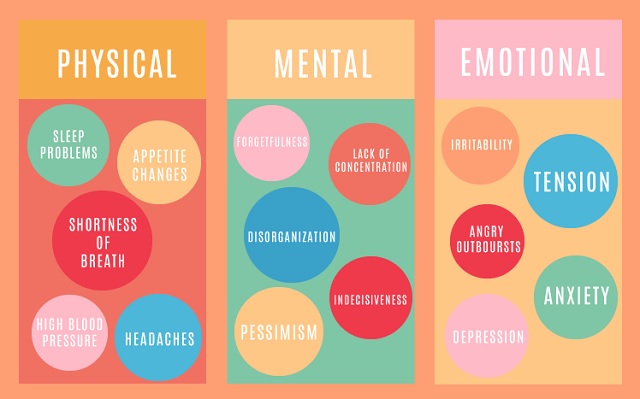
What it is and how to prevent – insights from a clinical psychologist
Kampala, Uganda | Shahieda Jansen | People close to you, including family members, friends, and co-workers, frequently express their “stress” at this time of year. As the end of the year draws nearer people are likely to feel weary, irritable and overwhelmed.
The definition of stress is the bodily, psychological, and social-spiritual reaction to a demand or stressor. The stressor could be a deficiency (like unemployment), a danger to one’s physical or mental health, or a deadline at work. A certain amount of stress is necessary for performance and is even pleasurable at times, according to Hans Seyle, the “father” of stress research.
As social beings at our core, humans rely on others to organise both our internal and external environments. Although we cannot survive without interpersonal relationships, engaging with others in high-stress situations (such as lengthy patient care) can be emotionally draining and lead to the onset of stress symptoms. As with everything human, too much stress or the wrong kind of stress can suppress the immune system, leading to illness and discomfort.
Burnout is a vague term and can be communicated in a variety of ways, usually as being more complicated and harmful than stress. The scientific literature defines it as a combination of emotional weariness, depersonalisation and reduced functioning.
Depersonalisation is the state of feeling disconnected from oneself, as though one were viewing oneself from the outside. Cynicism, a loss of empathy, as well as harsh and insensitive behaviour, may occur due to this.
There is little doubt that stress and burnout are related experiences. But it’s crucial to focus on the distinctions between them. Stress is tied to pressures that people face on a daily basis, and may also be beneficial. Burnout and stress begin to overlap when stress becomes protracted and chronic, causing distress and negative effects. But burnout distinguishes itself from stress in significant ways.
In a work context, some of the clear warning signs that someone may be close to or experiencing burnout – or a level of distress that is beyond that of stress – is when they begin to doubt their self-competence. Despite being capable, a burnout staff member may progressively feel inadequate or ineffective. The fatigue reported may be described as an inner depletion or of being completely worn out and overextended. Furthermore, this usually caring and considerate person may display a lack of concern towards others, or an out of character “I don’t care” attitude.
It should come as no surprise that employees in human services – including those in healthcare, mental health, and correctional services – frequently experience burnout. Exhaustion, a lack of empathy, and doubting one’s self-competence are just a few symptoms that can result from long-term, unrelieved exposure to other people’s problems and toxic, unfavourable work settings.
The effects of burnout can have an impact on the person who experiences it as well as others in their environment. Consider instances in which there are acts of frustration, where a door gets slammed shut or kicked. Burnout may be accompanied by unhealthy interpersonal relationships at work and at home.

Stress, burnout and the meaning of life
Although it is typically thought of as a psychological process, burnout is more complex than that. Despite the fact that some people experience higher levels of stress than others, their stress is less likely to lead to burnout because they are more frequently connected with what is significant in their lives.
Some opinions on burnout neglect the primal human quest for significance in life. A meaningful existence involves having strong social ties, positive pride in our complicated identities rooted in “where we are from,” feeling purposeful, and the conviction of living a life that matters.
One of the major issues facing modern civilisation right now is loneliness and isolation, which naturally frustrates desires for authentic connection and meaning. Belonging and interpersonal connections are key components of meaning both inside and outside of the workplace.
In modern times, people frequently transfer their desire for significance and purpose into their professional lives. Some people may yearn to see that their labour has significance beyond its purely economic usefulness. How their service or product “fits” with societal needs and wants is something they are interested in. Employees may be motivated by knowing that someone depends on and benefits from their contributions at work. According to research, even in situations of extreme professional stress, the perceived meaning of the work may prevent burnout.
Preventing burnout
There are a variety of self-help and community tools, as well as advice, available for the prevention of burnout. I recall the stress management workshops I used to facilitate. Understanding how the body-mind is constructed to withstand stress and being able to manage stress are enlightening and crucial to mental health care.
For instance, parental burnout – where a new parent feels unable to continue carrying out basic tasks like bathing small children or doing the dishes – can happen. And so, aiding a stressed-out mother in obtaining social support will allow her to take the required “me-time” and break from the constant demands for nurturing. This will protect both the mother’s sanity and the children’s wellbeing.
In my practice as a psychologist, over and above the application of stress reduction techniques, I deem it important that time is set aside to consider and take action on systemic and personal alignment with purpose and values. Contemplating whether our personal and work lives are worth living is itself a stress reduction exercise.
Regular intimacy with our higher values is nurturing, boosts our vitality and make us feel part of some interwoven meaning frame. Alternately, creating a home or work environment where modest acts of kindness, generosity, and helpfulness are frequently displayed might prevent the buildup of chronic stress and anxiety.
Therefore, unless actions are taken to make work a place where employees can engage meaningfully with their duties, even the best workplace stress management programmes won’t be able to lower the risks of burnout. Employers may need to understand the advantages of attempting to create a strong network of secure interactions among employees in the company.
For employees to feel heard, recognised, and valued, it would be necessary to foster a genuine sense of belonging through the deliberate nurturing of social cohesion, and the strategic advancement of the paradoxes of sameness, unity and diversity. Creativity at work thrives in a setting of socio-spiritual visibility and safety. A tranquil and secure work or home environment is the cornerstone for the prevention and control of stress and burnout.
*****
Shahieda Jansen is Clinical Psychologist and Acting Regional Director, University of South Africa
Source: The conversation
 The Independent Uganda: You get the Truth we Pay the Price
The Independent Uganda: You get the Truth we Pay the Price


